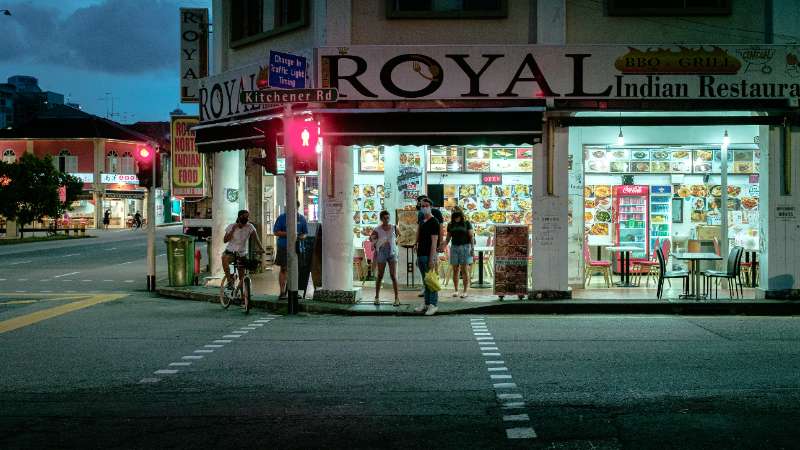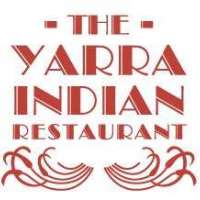For context, she is of South Indian origin, but anyone who has ever gone to an Indian restaurant and ordered chicken tikka masala might feel a little offended by this.
Climate, topography, and agriculture, as well as centuries of trade, all have an impact on Indian food, as they do on any cuisine. Because of the temperate climate and wheat production in north India, people make thick curries with dairy, nuts, or a tomato base and eat them with bread.
In contrast, the southern part of India is tropical or semi-tropical, so the cuisine revolves around coconut, fresh chilli, curry leaves, and rice-based dishes.
These regional differences are rarely found in Indian restaurants in Australia. Like Lakshmi's assessment of North American Indian cuisine, Indian food in Australia tends to be more north Indian (or Punjabi).
The Punjabi community was among the first wave of Indian immigrants to Australia, and Hindi and Punjabi are now two of the top ten languages spoken in Australia. This meant that north Indian cuisine became the default Indian cuisine, and changing that perception takes time.
When Vikram Arumugam and Preeti Elamaran opened their restaurant Nithik's Kitchen in Balmain, Sydney, in 2013, their customers had never heard of Chettinad cuisine. Arumugam explains, "They wanted tandoori chicken or butter naan."
But diners soon learned to embrace the restaurant’s south Indian flavours. “Our speciality is rice or idlis eaten with goat or fish curry,” Arumugam explains. “The food is always flavourful because we use tamarind, coconut and fenugreek.”
Nithik's Kitchen is representative of a larger trend. Despite the fact that Australians are unable to travel at the moment, prior to Covid-19, India was among the top ten most popular tourist destinations for Australians, ahead of France and Italy. Meanwhile, according to ABS data, Indians are now the country's third largest migrant group. There are 592,000 Indians living in Australia as of June 2018, which is up 30% from 2016. Indian languages including Tamil, Malayalam and Bengali saw a big jump in the 2016 census, which points to a newer, south and east Indian diaspora, who bring with them preferences for different types of Indian food.
Another sign of this shift is the proliferation of dosas, a South Indian staple. This rice-based savoury pancake is a versatile and healthy snack that can be topped with other ingredients such as onions, eggs, potatoes, and even cheese. It is also suitable for vegetarians and those who are gluten intolerant. Dosa restaurants can now be found in almost every Australian city. Dosa Hut is a particular success story; it opened its first location in 2007 and has since expanded to more than 20 franchise locations in Victoria, New South Wales, South Australia, and Queensland.
Arumugam notes that it has become much easier to obtain the specialty ingredients he uses both in his restaurant and as a home cook. “There was always ghee in Australia, but now I have choices in brands!”
He makes an interesting point about the abundance of options. Curry leaves and asafoetida still require a trip to a specialty grocer, but regional spice mixes and curry kits are now available in mainstream supermarkets. Bengali coconut daal spice mix is now available in stores alongside the more common korma curry sauce. These pre-made mixes appeal to both newer immigrants whose regional cuisine is underrepresented in Australian restaurants and curious non-Indian customers looking to expand their home cooking repertoires.
As the range of Indian food grows in Australia, chefs have the liberty of defining their version of Indian food. Newer Indian restaurants, such as Delhi Streets and Gopi Ka Chatka in Melbourne, have abandoned a regional focus in favor of serving street food or "chaats" such as bhel puri (puffed rice with assorted lentils and chutney) and pani puri (ball-shaped crispy shell filled with tamarind chutney, potato, onion, or chickpea) in a relaxed setting.
This shift is also visible in higher-end restaurants, such as Sauma in Perth. Gurps Bagga, the restaurant's owner, describes his food as "regional Indian cuisine with local Australian flavors." “Our food here is distinctly south Indian, with a Goan and Keralan influence, but it is also innovative and local,” he explains.
Bagga, for example, cooks Western Australia's hardwood sawdust mushrooms with garlic, korma sauce, chilli oil, and hazelnut truffle. “You can taste the Indian spices, but I added my own spin on it. You can call it contemporary or fusion. The important thing is that you enjoy it.”
And that just might be the unofficial ethos of Indian food.
The Yarra Indian Restaurant is an Indian restaurant that specialized in delicious and mouth-watering indian cuisines. Visit this best Indian restaurant at south Yarra and try the best indian’s cuisine there.
Source: Annie Hariharan (theguardian.com)



































